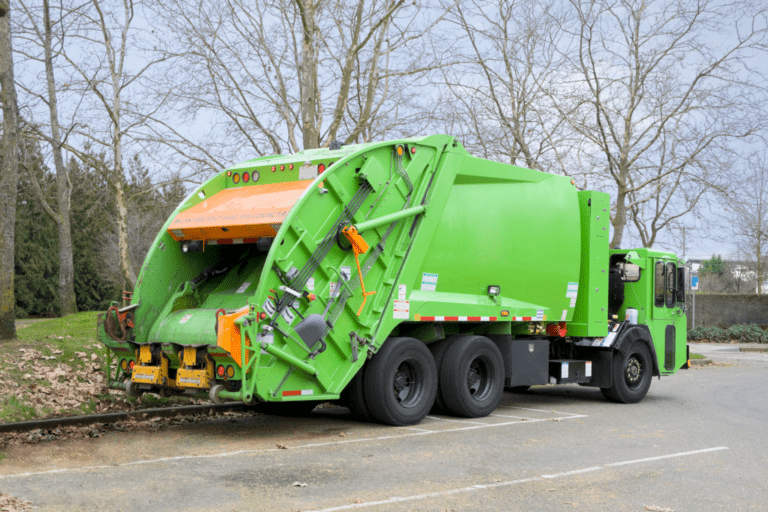What Is CVSA Brake Safety Week?
CVSA Brake Safety Week, sponsored by the CVSA, is a week-long event that focuses on the importance of brake safety. It is part of the Operation Airbrake Program and is sponsored by the Canadian Council of Motor Transport Administrators and the U.S. Department of Transportation’s Federal Motor Carrier Safety Administration.
For anyone with commercial motor vehicles, you can expect to find enforcement officials on the road until August 26. They will be conducting inspections, primarily focusing on the braking systems of all commercial vehicles, but also inspecting the whole vehicle as well. If vehicles are found to be in violation of any safety codes, they will be taken out of service until they issue is fixed.
Officials are also using this time to educate drivers and mechanics about the importance of proper brake maintenance. They are there to discuss safety measures with drivers and mechanics during this time.
Types of inspections taking place
For CMVs, enforcement officials are conducting the North American Standard Level I Inspection. This is a thirty-seven step inspection, looking at both driver operating requirements and vehicle mechanical fitness.
They are looking at the following:
-
Inspection of brakes and their components (rotors, hoses, air chambers, pads, drums, etc.)
-
Air and hydraulic leaks
-
Seat belts
-
Vehicle inspection report(s)
-
Lights
-
Steering
-
Frame
-
Suspension
-
Windshield wipers
-
Tires
-
The load that they are carrying
-
And much more
You might also be facing an inspection using performance-based brake testing (PBBT) equipment. This measures your vehicle braking efficiency, which means that they are looking at the cumulative brake force for the entire vehicle. It gets dividing by the weight of the vehicle to see how well it can stop.
The minimum requirement is forty-three and a half percent and is regulated by the U.S. Federal Motor Carrier Safety Regulations and the CVSA North American Standard Out-of-Service Criteria.
1. Brake systems remain the #1 out-of-service violation for vehicles
Brad pads (and well hoses) are essential for safety on the roads for all vehicles, since so many accidents and fatalities can be attributed to faulty brakes. Not only that, good brakes and their components help to ensure the lifespan of your parts and assets, which is also good for your bottom line.
During CSVA’s Brake Safety Week 2022, more than thirteen percent of all inspected trucks were found to have had brake problems and placed out-of-service. It’s worth noting that the inspections conducted during Brake Safety Week are no different from the inspections conducted any other day of the year.
Last year, inspectors identified and documented 6,305 brake hose/tube chafing violations, a common brake-related violation. Inspectors reported brake hose chafing violations in four different categories, with varying levels of chafing severity, including one which was an out-of-service violation.
2. Ensure you include brake checks as part of a routine pre-trip inspection
For any vehicle in your fleet, now is a good time to inspect the brake system for any of your vehicles in service.
While this is a required pre-trip item to include in your DVIR by law (for commercial motor vehicles), it’s also something to check periodically if you have a fleet of work trucks, passenger vans, or anything else.
If you want to ensure that your vehicle will pass an inspection/meet safety requirements it’s always a good idea to give your team a quick refresher for checking for leaks, loose hoses, and any other problems.
Have a fleet maintenance systems in place
To be proactive, the truth is that your fleet should have preventative maintenance program in place. By taking care of your vehicles properly and checking them regularly, you can identify problems early, instead of waiting until you are stuck on the side of the road or hit with fines.
Here are a couple of maintenance programs that many of our customers often set up, that can be triggered by mileage or engine hours:
-
Oil and fluid changes. Change the oil and check fluids regularly. You don’t want to run out of oil or any of the other important fluids that you need so your truck runs smoothly.
-
Brake replacement and servicing. For air brakes, check the tubing and the hoses regularly. You should replace any hoses, pads, drums, and rotors as they wear.
Ensure drivers have the right forms and instructions for inspecting brakes
If you want to make sure that your vehicles are running at the top level, you are going to want to make sure that your drivers do a thorough daily vehicle inspection report (DVIR). Scheduled periodic inspections by mechanics are also extremely important.
This includes inspecting tires, fluids, and tubing. Visually inspecting lights, brakes, and providing photo documentation where needed is also a good best practice to implement.
3. Review your process to ensure brake inspections and maintenance are completed
One of the biggest problems with brake inspections is simply not having a way to track what vehicles have missed an inspection, and which may be due for maintenance.
The problem often lies in the paperwork itself. With many fleets, drivers need their commercial drivers licenses, along with current DOT physical information, driving records, as well as the registration and annual DOT inspection.
These types of documents are critical in the event of an accident, but it can make it extremely difficult when also having to juggle keeping inspection forms and other paper records.
Why electronic DVIRs are the answer
Thanks to electronic DVIRs, managers can receive real-time notifications on missed inspections, or even when a routine brake service is due based on mileage. This completely eliminates the need to manually keep track of this type of important information.
Thinking about switching from paper inspections to digital inspections to ensure crucial checklist items like brakes are actually inspected (and with proof)?
Book a demo today to see how thousands of fleets are using Whip Around to create safer fleets and safer drivers with digital inspections and maintenance.









